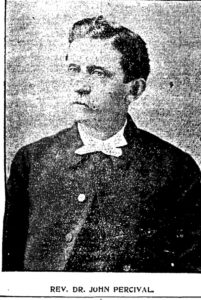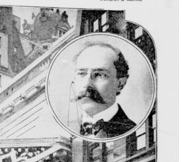People to Whom JLN Wrote
Josephine Louise Newcomb kept up a steady correspondence with many people in the years 1871 to her death in 1901. Her letters housed in the McConnell family papers collection at Tulane University were sent to twelve recipients whose brief biographies are provided below: Alice Bowman, Brandt V.B. Dixon, Eliza Dixon, Joseph A. Hincks, Margaret Avery Johnston, William Preston Johnston, G.W. Custis Lee, James McConnell, John Percival, H.K. Pomroy, Sarah Brock Putnam, and Francis A. Scratchley. She frequently mentioned other friends and relatives in her letters, and when possible, these acquaintances also are identified in another section you may reach here.
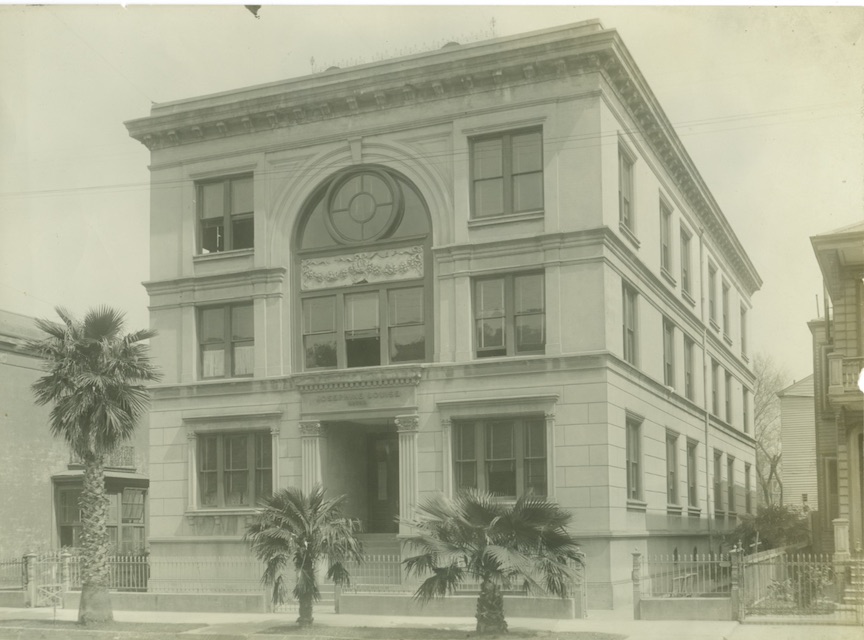
Alice Bowman, 1845-1929
Lady-in-Charge, Josephine Louise House
JLN left the major portion of her great wealth to the Administrators of the Tulane Educational Fund. She made only three other bequests: to Greenwood Cemetery for the care of two lots ($2,000); to William Robertson of Charleston, South Carolina ($1,000); and to Alice Bowman of New Orleans ($5,000. Approximately $152,000 in 2018). More

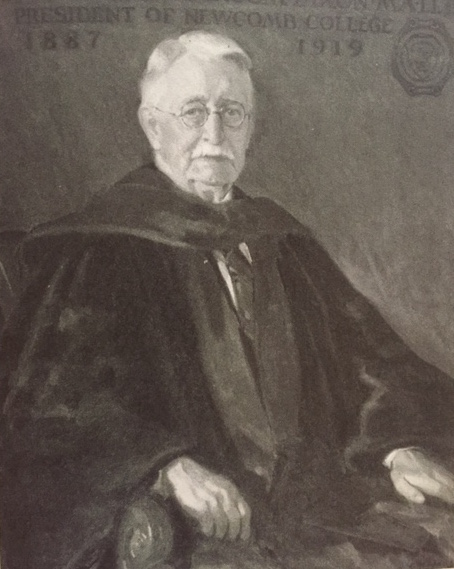
Brandt V. B. Dixon, A.M., L.L.D., 1850-1941
President, H. Sophie Newcomb Memorial College
In 1887, at age 37, Brandt Van Blarcom Dixon was hired as president of the H. Sophie Newcomb Memorial College by the Administrators of the Tulane Educational Fund. However, his first recorded correspondence with the benefactress of the College was not until 1890, and his first meeting with her, not until 1892. Both delays would be attributed to fear: fears on the part of Tulane University administrators, and fears held by Mrs. Newcomb. More

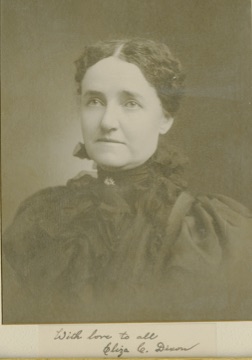
Eliza Carson Dixon, 1852-1930
Mrs. Brandt Dixon, wife of the Newcomb College president
It is unlikely Eliza Carson Dixon would have met or known Mrs. Newcomb if it were not for her husband’s position. Little is recorded of her. Her life, like the lives of so many middle-class women of this era, was defined by the work of her husband, while her work was taken for granted and largely unseen. She was never called upon to testify during the Newcomb trial proceedings and only one letter to her from Mrs. Newcomb was introduced into evidence. Three letters to her were saved in the McConnell family papers. More

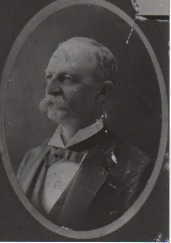
Joseph Anatole Hincks, 1841-1923
JLN’s third cousin, and secretary-treasurer of the Administrators of the Tulane Educational Fund
Writing to Tulane University president William Preston Johnston on November 25, 1891, JLN relates that “A letter from my cousin Mr Jos. A. Hincks, tells me how his Pa and himself enjoyed your visit, and I am most happy they know you.” Joseph Hincks was JLN’s third cousin on her mother’s side, his father being her mother’s first cousin. Joseph Hincks became one of her most trusted relatives and advisors. He, along with Brandt Dixon, was executor of her estate, charged with ensuring that her fortune would be used solely for the benefit of the H. Sophie Newcomb Memorial College. Hincks was in a position to oversee that her wishes were honored. More

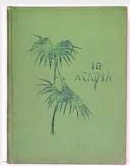
Margaret Avery Johnston, 1848-1925
Mrs. William Preston Johnston, activist and wife of the Tulane University president
Margaret Henshaw Avery Johnston was the editor of a book on Acadian life published in 1893 whose cover is shown above, and well-known for promoting the region. As the wife of Tulane University’s first president William Preston Johnston, she took an active interest in the activities of the University. Campus lore still mentions that she selected the school’s colors of blue and green, finding the plumbago and resurrection ferns of New Orleans’ gardens suitable for the university symbol. More.


William Preston Johnston, 1831-1899
President, Tulane University, 1884-1899
William Preston Johnston’s friendship with JLN is thought to have begun in Louisville, his hometown, during the 1840s, and to have continued after the Civil War when Warren Newcomb gave money to Washington College (after 1870, Washington and Lee University). There, Johnston began his teaching and administrative career, in part because the Lee family knew him so well. For the Virginia school, Warren Newcomb provided money to create the Sophie Newcomb Fellowship Fund, and later, after her husband’s death, JLN worked with Johnston to build a library in his memory. Newcomb Hall still stands at Washington and Lee as one of five buildings forming the Colonnade, a National Historic Landmark. In 1880, Johnston left Virginia to become president of Louisiana State University and A&M College. Johnston left LSU in 1883, and in 1884, he became the first president of the Tulane University of Louisiana, a private institution created through the donation of Paul Tulane and the transfer of all properties of the state-funded University of Louisiana. He remained in this position until his death in 1899. At Tulane, Johnston was an adept fundraiser, and called on Ida Richardson when he wanted to raise money for the education of women in New Orleans. It was Richardson who directed him to JLN. More

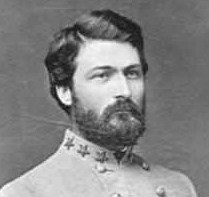
George Washington Custis Lee, 1832-1913
President, Washington and Lee University, 1871-1897
The only letter JLN wrote to General Custis Lee existing in the McConnell Family Papers (dated May 24, 1882) asks of him a favor: that he get the watch, chain and key that had belonged to Warren Newcomb, and also a book of sermons by Rev. Lawrence, from Frank Scratchley. JLN had loaned Scratchley the items and now wished their return because of a falling out. Scratchley would have been known to Lee as a student at Washington and Lee University and a recipient of the scholarship Warren established in Sophie’s name. More

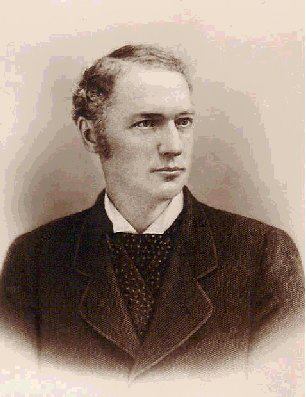
James Bowie McConnell, 1829-1914
Member and vice-president of the Administrators of the Tulane Educational Fund; counsel for the defense of JLN’s last will and testament
The Josephine Louise Newcomb Letters Project is possible only because James McConnell issued a call to JLN’s friends and family for letters she had written to them for possible use in the defense of her will. Most of those letters were presented as evidence in the court case. Others, those we’ve transcribed here, were kept in his personal files. Five of those letters were written to McConnell. More

Rev. John Percival, 1830-1904
Rector, Free Church of the Annunciation, New Orleans
John Percival was among JLN’s circle of Episcopalian friends. On her 1894 winter visit to New Orleans, JLN stayed at his home on Jackson Avenue for several months. Though born in England, Percival spent most of his adult life in New Orleans. He was for ten years the organist and choirmaster of Trinity Church, New Orleans, and for eight months during the Civil War, its temporary rector. He began his professional career as a teacher and taught both at the private female institution, Madam Massie’s, and at the public, Boys’ High School, where he served for twelve years, first as assistant principal and then as principal. In 1864, he began his work as rector to rebuild the Free Church of the Annunciation and is credited with attracting a sizeable congregant. He held great pride that the Church was open to all in the community, regardless of religion or creed, through support from voluntary contributions and not pew rentals. In 1869, Washington College awarded him the degree of Doctor of Divinity for his efforts building the free church. Thereafter, he often was referred to as Dr. Percival. Percival’s name became synonymous with the Church where he was rector for 38 years. He was highly regarded within the Episcopal community and at the time of his death was second officer within the Episcopal Diocese of Louisiana. Though there is just one letter to him from JLN, his missionary work and its charitable efforts greatly appealed to her. Interestingly, Paul Tulane also had helped the church, providing funding for purchase of one of its locations before the Civil War.

H. K. Pomroy, 1854-1925
JLN’s financial advisor
H.K. (Henry Keney) Pomroy was a prominent New York stock broker with whom JLN entrusted the management of her financial portfolio. While JLN was said to have been an astute business woman, personally directing the investments and sales of her holdings, she also relied heavily on H.K. Pomroy to make many of those decisions. Whether alone or together, by the time of her death in 1901, they had skillfully managed to increase by nine or ten times the inheritance she had received at the death of her husband in 1866. More


Sarah Brock Putnam, 1831-1911
JLN’s close friend and correspondent
A Virginian, Sarah or Sallie Brock was educated at home by a tutor, himself a product of Harvard who lived for four years with her family. Her father was a professor at the University of Virginia. In 1882, she married an Episcopal priest, Richard Fletcher Putnam, but would always write under her maiden name, indeed often using her nickname Sallie, thus Sallie A. Brock. Her book Richmond During the War, a record of personal experience and observations in the Confederate capital, was published in 1867. She also edited a compilation of war poetry, The Southern Amaranth and published one novel, Kenneth, the King. Finally she wrote for Frank Leslie’s Illustrated Magazine, and other periodicals. During the 1890s, JLN often stayed with the Putnams in Lime Rock, Connecticut. It is likely that she met them through another Episcopal minister, John Chamberlain, whose wife Elizabeth Chamberlain and daughter became good friends with JLN. Rev. Chamberlain, along with Thomas Gallaudet, established a chapel within New York University called St. Ann’s Church for the Deaf Mutes. JLN’s connection with the Putnams and the Chamberlains were long and endearing to her. Their work in expanding educational opportunities for others in relation to her own memorial ideas could be explored more.


Francis A. Scratchley, 1858-1929
Recipient of Sophie Newcomb Fellowship Fund for Washington and Lee University, and long-time acquaintance of JLN
Francis A., or Frank, Scratchley had a number of interesting affiliations with JLN. In the years after Sophie’s death, he was one of a handful of beneficiaries of Josephine Louise Newcomb’s wealth. In the early to mid 1870s, she arranged for his receipt of a scholarship at Washington and Lee University. She apparently also loaned him Warren Newcomb’s watch and later, when he was attending New York University came to rely upon him to assist in finding her housing, accompanying her to dinner, and ultimately serving as her last physician. It was he who was the physician signing her death certificate. Their connection then lasted almost thirty years but appears never to have been without some friction. In the court case records, he discusses her preference for hotels: she preferred not “to keep house.” But he noted, she also wanted a companion in the hotel or nearby to go to dinner with and also to protect her. With Scratchley, she would visit Greenwood Cemetery and also go to the theater. He tried to interest her in funding St. Sophie’s Hospital in West Virginia, which he named for Sophie, but she resisted. There were other times, years even, when they were estranged. He recalled seeing her in New Orleans in 1893, for example, but not speaking to her. He became an expert on insanity, and eventually instructor and chair in the Nervous Diseases Department at NY University Medical School. He worked also in other facilities for the aged, infirm, and immigrants, and on Blackwell’s Island, often cited as the first mental hospital in the country. He translated from the German a textbook on “electro diagnosis” and electro-therapeutics.

